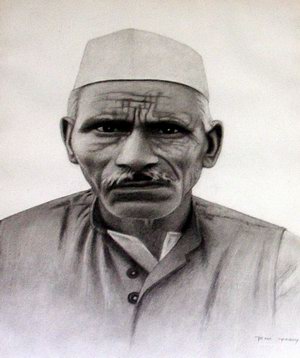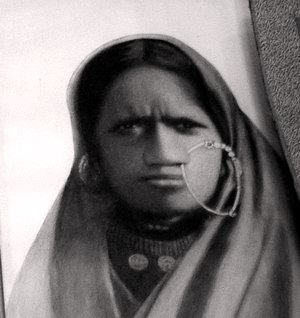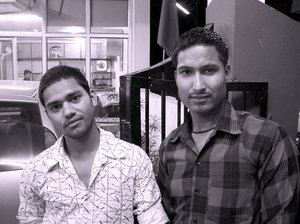People of Srinagar |
|
|
People here are nice, honest, hardworking and shy! More often they are short and stout. Toughness and difficult life of mountains make them special. A reasonable percentage of Uttaranchal enjoys their share in Armed Forces and many work outside the state/country for better job prospects, for a better earning. Horticulture, Agriculture and Tourism are three major activities after Government Service Sector, which is also a prime engagement. However, Agriculture, Tourism and Horticulture are not fully utilised in the Hills. In place like Srinagar, cultures and people of different places and regions across India are seen interwoven and intermixed with each other. However, people of few surrounding villages across the valley are major and crucial ingredients. These people since olden times, have inhabitated and dominated the Srinagar Town till date. People from Dang, Sumadi, Khola, Sumana, etc. have their good influence on Srinagar. Srinagar's Socio-Cultural-Administrative aspects are much driven by the people settled in Srinagar from these outskirting villages. Of them, people with their roots in Dang, Sumadi villages are leading personalities of Srinagar. Whereas, talking about villages themselves, the valley and countryside stereotype prevails noticeably. People of Hills on a general front, are popularly known, atleast among themselves, as Paharis or Highlanders. Truly they are highlanders. Pahar (Mountain or the Hills) motivates and embraces the inhabitants, nothing else does. Hill Men they are, they believe and significantly they differ in few critical aspects from people from other parts, especially there should be a slight distinction between those from the Hills and the ones from the Plains. Interesting to learn is Srinagar and people of Srinagar are a nice blend of overlapped times, history and cultures, all living with unity and harmony. Everything, ultimately returning to the distinct and classical Indian identity. Srinagar, with each rewritten history upon itself, has remained constant and has retained few particular features. Firstly, it has remained a capital, so even today, people here have that feudal spirit and knack to take up and handle such intellectual activities. Be it administrative, art, culture, education or the activities engaging them in regional business and trade. Secondly, Srinagar has been an important spiritual and pilgrimage centre enroute Badrinath-Kedarnath. Therefore, we find a good number of places and people in and around Srinagar, well tied up with this space time. Srinagar's ambience itself circulates this energy which can be felt by the visitors. On the other hand, being a moderately landscaped, frequently accessed and reasonably resourced mountain town, many villages and a large portion of the region deals with Srinagar for their local needs and demands. So many people here are tradesmen or merchants dealing in either local needs or in business which caters to the tourists. At the same time people here are simple yet learned and content. |
People in People
The Indian caste system prevails well in entire Uttarakhand and so it does in Srinagar. People of various caste and creed live here. The most percent is denoted by Hindus followed by Sikh, Muslim, Christians and a few of various tribes. However, a large portion in Uttarakhand itself is said to have ascended from the plains to these hills and settled here permanently. Across the Hindu society here, Brahmins and Kshatriya are large constituents. Dress and clothings of the people are, women are found wearing Ghaghra (Long skirt put on under Saree) and Angadi (Blouse sort of wearing, slightly longer, with full sleeves and round neck design), Men wear Kurta and Paijama, a semi jacket over the Kurta (Shirt) and a Topi (Hat). However, the modern dresses and garments have replaced the traditional dress-code of the Hills. Woolen is widely used and ornaments, jewellery and such accessories are frequently used on various occasions, during fairs and festivals.
Garhwali, Hindi, Punjabi and handy English are most spoken languages among people. However a typical Srinagari flavoured Garhwali language which is also a prominent feature of the valley is widely spoken here. The syntax, format and a large amount glossary of Garhwali & other regional Garhwali types are basically Sanskrit, Vagadi (spoken around Vagad on Gujarat - Rajasthan border), Hindi and Pahari (Pahari language represents a special feature, tone, punctuation and style, with some similarity in all languages across entire Himalayan region, from Jammu & Kashmir to Nepal - Tibet) in its core, all these languages make up the tasteful Garhwali language. The 'Srinagari' type of Garhwali is little poetic and sattire in its nature. Srinagari is often a critique's language as it is said.
|

Srinagar People






